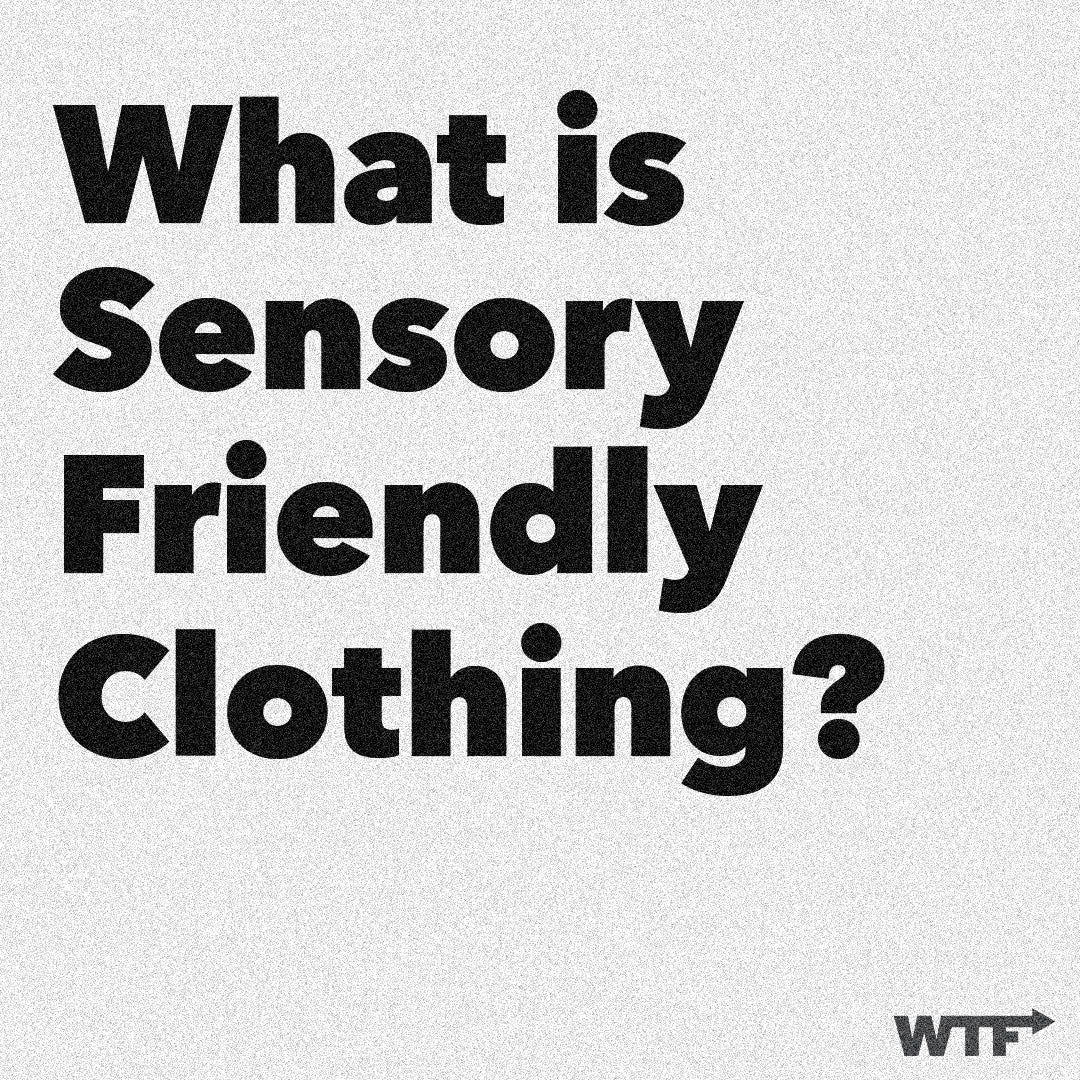Have you heard of sensory friendly clothing before? Even if you may not have heard about it before, there is a very high chance that you actually own something that qualifies as sensory friendly clothing!
Sensory friendly clothing is clothing designed for those who have touch sensory sensitivities.
As a refresher, some people experience sensory overload through one or more of the five senses:
- sight
- smell
- taste
- hearing
- touch
In clothing, the sense that is usually the most affected is our sense of touch.
Common causes of overstimulation in clothing include:
- tags in clothing
- rough seams
- certain fabric textures
- fit of clothing
Sensory friendly clothing is the solution to overstimulation from clothing! Sensory friendly clothing comes in many different types and designs.
Some examples of sensory friendly clothing include:
- tagless clothing
- seamless clothing
- soft seam finishes
- different fabric textures
- various fits for garments
Tagless clothing
Instead of having sewn-in tags, clothing can have labels printed on the inside of the garment. As of right now, this is only really popularized on a wide scale for casual garments like t-shirts. The problem with printed labels is that they may not be as durable and wear-resistant compared to sewn-in labels. Although it's also important to consider that printed labels can last longer than the sewn-in labels since they wouldn't be cut off.
This is a conversation that the industry has been debating for a while and has recently been gaining more traction. On June 20th (just 3 days ago!) the Business of Fashion wrote an article titled "The Fashion Industry's War on Clothing Tags." We'll talk more about this article in tomorrow's blog post!
Seamless clothing
Seamless clothing has no stitches or seams, which is a new and innovative way of manufacturing clothing. The absence of stitches and seams brings a number of benefits in addition to the comfort that it brings! A lot of athletic wear and underwear are made to be seamless.
Soft seam finishes
Softer seam finishes can be an alternative solution to addressing the discomfort that certain seam finishes can cause. The type of seam finishes that work best for creating sensory friendly clothing is often dependent on a personal preference. Most often, it is preferred that if the garment is going to be touching the body, the seam lays flat.
Different fabric textures
Similar to the seam finishes, different fabrics affect people differently. While some people may prefer plain, soft fabrics such as a cotton jersey knit, others may prefer something with a little bit more texture like a waffle knit or even a piled fabric like velvet or corduroy. Each person perceives a fabric's sensation differently.
Various fits for garments
Just like the fabric textures, this can come in plenty of different ways. Examples of fits can fall on either side of the spectrum. For instance, this can include a tight, glove-like fit that hugs the body so there is less variance of touch and friction based on movement. Clothing that hugs the body allows for a consistent pressure to be placed evenly throughout the body so that the body does not need to react to the fabric touching various parts of the body every time the person wearing the clothes moves.
The complete opposite of this is also an example of a sensory friendly clothing item. Some people cannot handle the constant stimulation of clothing touching them and instead feel better with looser fits. Looser-fitting clothing that falls away from the body can be more comfortable for people who feel restricted by their clothing.
Another example of this would be different necklines. Wider necklines tend to be considered more sensory friendly because narrower necklines can feel restricting to some people.
Sensory friendly clothing is something that benefits a lot more people than we realize. Sometimes people are not aware of how their clothing could be better until they are conscious of what options are available to them. Having these conversations where we learn more about what is available helps bring access to people who may not even know they need it. Knowing the proper terms helps people find solutions beyond cutting the tags off themselves!
